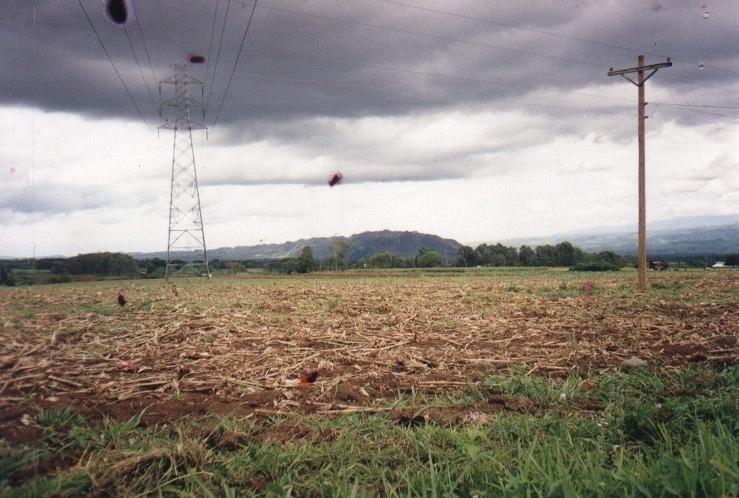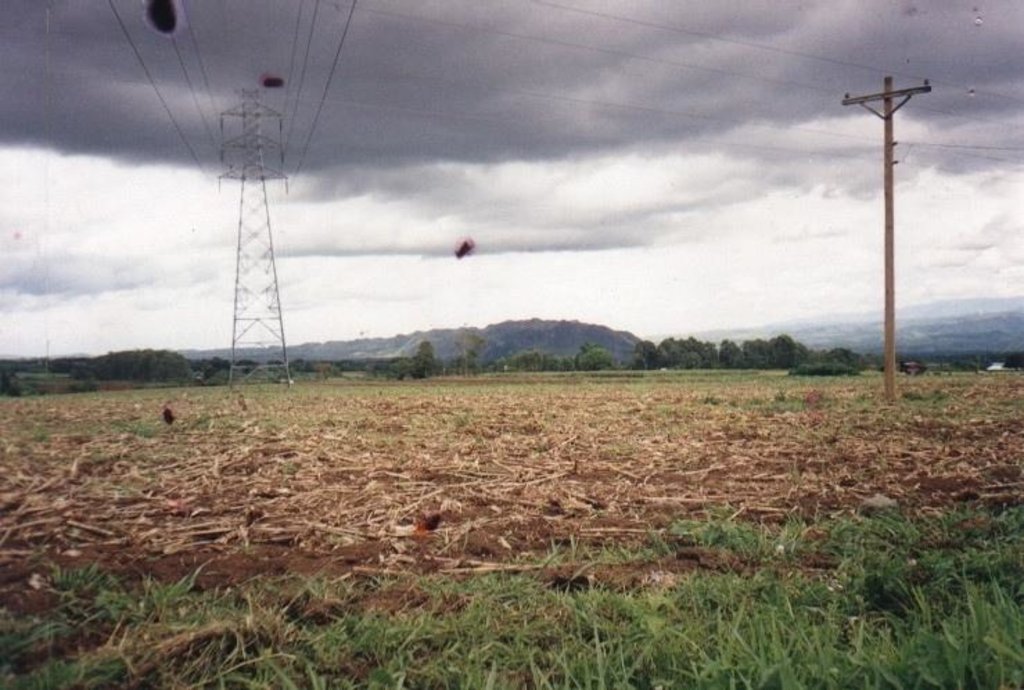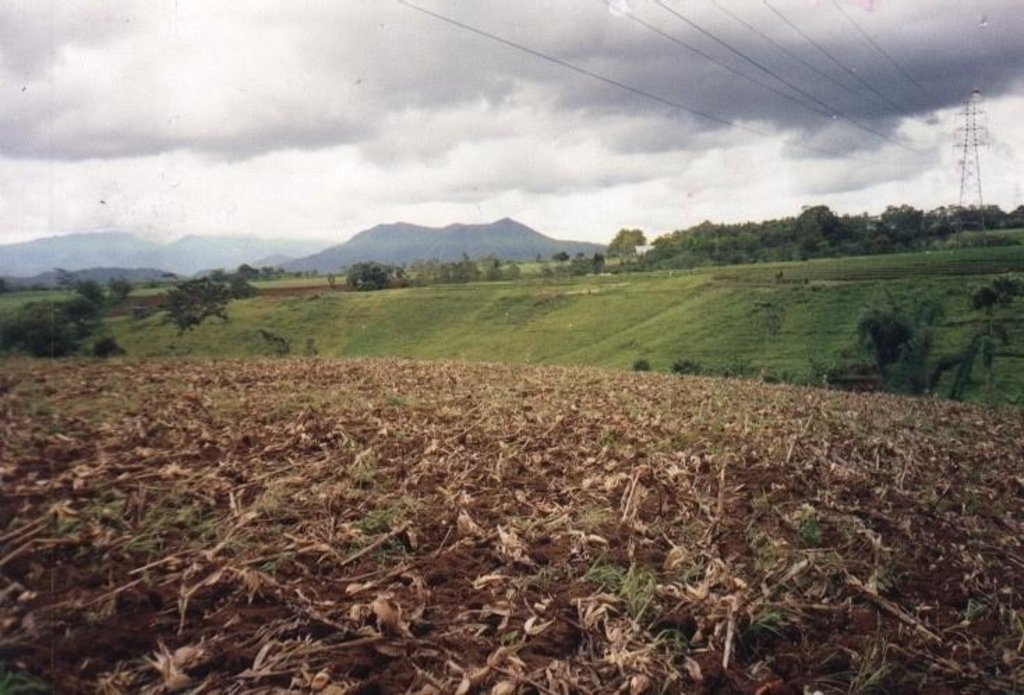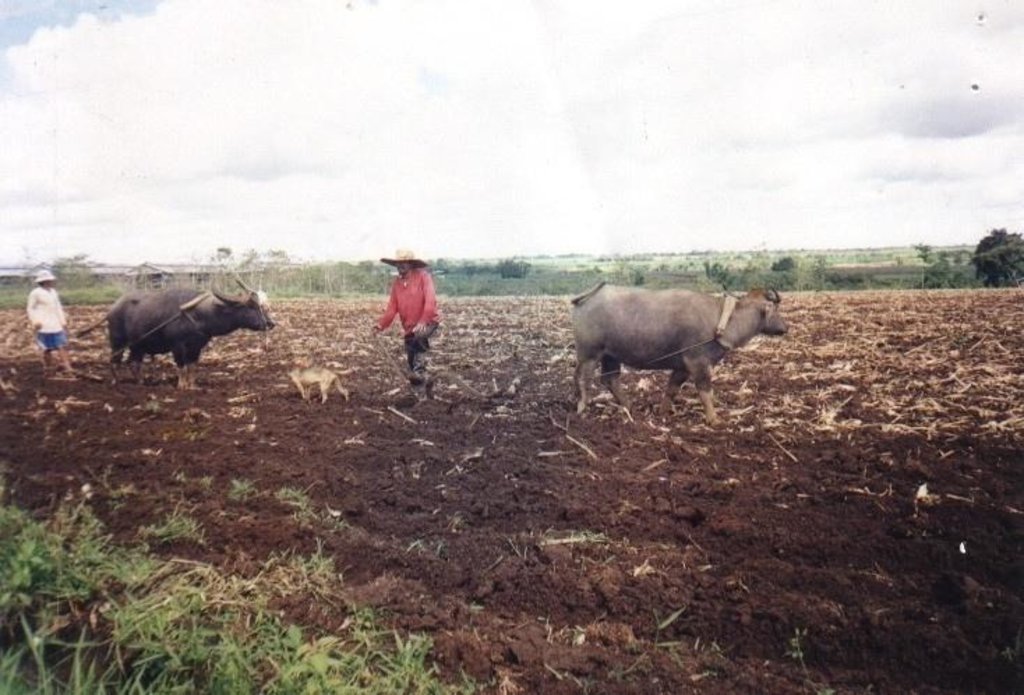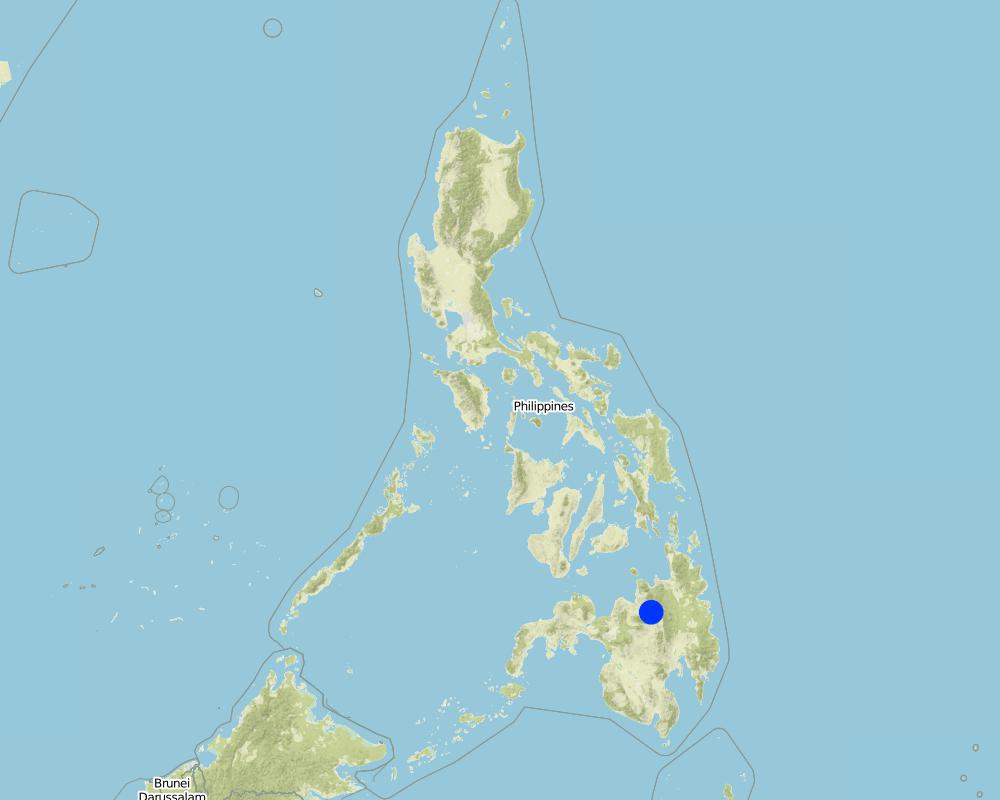Residue Incorporation (Corn) [Philippines]
- Creation:
- Update:
- Compiler: Philippine Overview of Conservation Approaches and Technologies
- Editor: –
- Reviewers: Deborah Niggli, Alexandra Gavilano
"Palugdang", "Palata"
technologies_1104 - Philippines
View sections
Expand all Collapse all1. General information
1.2 Contact details of resource persons and institutions involved in the assessment and documentation of the Technology
SLM specialist:
Pava Herminio D.
Central Mindanao University, Musuan, Bukidnon, Philippines
Philippines
SLM specialist:
Rondal Jose
Bureau of Soils and Water Management
Philippines
1.3 Conditions regarding the use of data documented through WOCAT
The compiler and key resource person(s) accept the conditions regarding the use of data documented through WOCAT:
Yes
1.4 Declaration on sustainability of the described Technology
Is the Technology described here problematic with regard to land degradation, so that it cannot be declared a sustainable land management technology?
No
2. Description of the SLM Technology
2.1 Short description of the Technology
Definition of the Technology:
Incorporation of corn stalks during land preparation for the succeeding crop.
2.2 Detailed description of the Technology
Description:
The technology is practiced in corn farm. It involves the incorporation of stalks and leaves, usually chopped, during the land preparation for the suceeding crop. Corn ears are harvested manually. After harvesting, the stalks are cut and spread on the farm. This provides surface protection to the soil during the turn-around period when erosive rainfall events can occur. After a 2-3 weeks turn-around period, land preparation for the succeeding crop starts. Land preparation can either be by machine or animal. The crop residues are incorporated during plowing which is done twice. The technology is intended to increase organic matter and other nutrients through recycling, improve soil structure and porosity and increase soil water holding capacity. The more common practice done in the past in disposing crop residue is by burning. Residue incorporation has added benefits in that it lessens the emission of gases, particularly carbon dioxide which contributes to global warming.
2.3 Photos of the Technology
2.5 Country/ region/ locations where the Technology has been applied and which are covered by this assessment
Country:
Philippines
Region/ State/ Province:
Bukidnon
Further specification of location:
Bukidnon
Specify the spread of the Technology:
- evenly spread over an area
If the Technology is evenly spread over an area, specify area covered (in km2):
10.0
If precise area is not known, indicate approximate area covered:
- 10-100 km2
Comments:
Total area covered by the SLM Technology is 10 km2.
The technology is also being practiced in other provinces in Mindanao, although not as popular as in Bukidnon which is the subject of this report
Map
×2.6 Date of implementation
If precise year is not known, indicate approximate date:
- more than 50 years ago (traditional)
2.7 Introduction of the Technology
Specify how the Technology was introduced:
- through projects/ external interventions
Comments (type of project, etc.):
Traditionally practiced by the farmers themselves.
3. Classification of the SLM Technology
3.1 Main purpose(s) of the Technology
- reduce, prevent, restore land degradation
3.2 Current land use type(s) where the Technology is applied

Cropland
- Annual cropping
Annual cropping - Specify crops:
- cereals - maize
Number of growing seasons per year:
- 2
Specify:
Longest growing period in days: 250, Longest growing period from month to month: Apr - Nov; Second longest growing period in days: 220, Second longest growing period from month to month: May - Oct
Comments:
Major land use problems (compiler’s opinion): Soil acidification, soil mining and fertility decline. Increasing soil erosion problem due to the culitvation of land with steep slope.
Major land use problems (land users’ perception): Increasing inputs to maintain yield.
3.4 Water supply
Water supply for the land on which the Technology is applied:
- rainfed
3.5 SLM group to which the Technology belongs
- improved ground/ vegetation cover
3.6 SLM measures comprising the Technology

agronomic measures
- A1: Vegetation/ soil cover
Comments:
Type of agronomic measures: mulching, manure / compost / residues, minimum tillage, contour tillage
3.7 Main types of land degradation addressed by the Technology

soil erosion by water
- Wt: loss of topsoil/ surface erosion
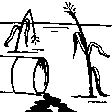
chemical soil deterioration
- Cn: fertility decline and reduced organic matter content (not caused by erosion)
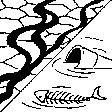
water degradation
- Ha: aridification
3.8 Prevention, reduction, or restoration of land degradation
Specify the goal of the Technology with regard to land degradation:
- restore/ rehabilitate severely degraded land
4. Technical specifications, implementation activities, inputs, and costs
4.1 Technical drawing of the Technology
Technical specifications (related to technical drawing):
Technical knowledge required for field staff / advisors: moderate
Technical knowledge required for land users: low
Main technical functions: increase in soil fertility
Secondary technical functions: control of dispersed runoff: impede / retard, increase in organic matter
Mulching
Material/ species: corn stalks
Quantity/ density: 4000-5000
Remarks: spread evenly
Manure / compost / residues
Material/ species: corn stalks
Quantity/ density: 4000-5000
Remarks: spread evenly
4.2 General information regarding the calculation of inputs and costs
other/ national currency (specify):
Peso
If relevant, indicate exchange rate from USD to local currency (e.g. 1 USD = 79.9 Brazilian Real): 1 USD =:
50.0
Indicate average wage cost of hired labour per day:
2.00
4.4 Costs and inputs needed for establishment
| Specify input | Unit | Quantity | Costs per Unit | Total costs per input | % of costs borne by land users | |
|---|---|---|---|---|---|---|
| Equipment | animal traction | ha | 1.0 | 27.8 | 27.8 | 100.0 |
| Plant material | seeds | ha | 1.0 | 13.3 | 13.3 | 100.0 |
| Fertilizers and biocides | fertilizer | ha | 1.0 | 75.0 | 75.0 | 100.0 |
| Fertilizers and biocides | biocides | ha | 1.0 | 74.0 | 74.0 | 100.0 |
| Other | planting (hours) | ha | 1.0 | 20.75 | 20.75 | 100.0 |
| Other | harvesting (hours) | ha | 1.0 | 30.0 | 30.0 | 100.0 |
| Other | maintenance (hours) | ha | 1.0 | 41.5 | 41.5 | 100.0 |
| Total costs for establishment of the Technology | 282.35 | |||||
| Total costs for establishment of the Technology in USD | 5.65 | |||||
4.5 Maintenance/ recurrent activities
| Activity | Timing/ frequency | |
|---|---|---|
| 1. | Cutting/chopping of corn stalks | after harvest / once |
| 2. | Plowing/incorporation of crop residue | before planting / 2-3 times |
| 3. | Planting | / 2-3 times/yr |
4.6 Costs and inputs needed for maintenance/ recurrent activities (per year)
Comments:
The cost is calculated starting from residue incorporation (plowing), crop establishment, maintenance (spraying, weeding) and harvesting.
4.7 Most important factors affecting the costs
Describe the most determinate factors affecting the costs:
Labor and material inputs (seeds, fertilizers, chemicals) are the main costs involve
5. Natural and human environment
5.1 Climate
Annual rainfall
- < 250 mm
- 251-500 mm
- 501-750 mm
- 751-1,000 mm
- 1,001-1,500 mm
- 1,501-2,000 mm
- 2,001-3,000 mm
- 3,001-4,000 mm
- > 4,000 mm
Agro-climatic zone
- humid
Thermal climate class: tropics
5.2 Topography
Slopes on average:
- flat (0-2%)
- gentle (3-5%)
- moderate (6-10%)
- rolling (11-15%)
- hilly (16-30%)
- steep (31-60%)
- very steep (>60%)
Landforms:
- plateau/plains
- ridges
- mountain slopes
- hill slopes
- footslopes
- valley floors
Altitudinal zone:
- 0-100 m a.s.l.
- 101-500 m a.s.l.
- 501-1,000 m a.s.l.
- 1,001-1,500 m a.s.l.
- 1,501-2,000 m a.s.l.
- 2,001-2,500 m a.s.l.
- 2,501-3,000 m a.s.l.
- 3,001-4,000 m a.s.l.
- > 4,000 m a.s.l.
5.3 Soils
Soil depth on average:
- very shallow (0-20 cm)
- shallow (21-50 cm)
- moderately deep (51-80 cm)
- deep (81-120 cm)
- very deep (> 120 cm)
Soil texture (topsoil):
- fine/ heavy (clay)
Topsoil organic matter:
- low (<1%)
5.6 Characteristics of land users applying the Technology
Market orientation of production system:
- mixed (subsistence/ commercial)
- commercial/ market
Off-farm income:
- 10-50% of all income
Relative level of wealth:
- poor
- average
Level of mechanization:
- animal traction
- mechanized/ motorized
Indicate other relevant characteristics of the land users:
Population density: 10-50 persons/km2
Annual population growth: 2% - 3%
10% of the land users are very rich and own 25% of the land.
20% of the land users are rich and own 10% of the land.
55% of the land users are average wealthy and own 50% of the land.
10% of the land users are poor and own 5% of the land.
5% of the land users are poor.
Off-farm income specification: Carpentry, trading, temporary employment (e.g. construction
5.7 Average area of land used by land users applying the Technology
- < 0.5 ha
- 0.5-1 ha
- 1-2 ha
- 2-5 ha
- 5-15 ha
- 15-50 ha
- 50-100 ha
- 100-500 ha
- 500-1,000 ha
- 1,000-10,000 ha
- > 10,000 ha
5.8 Land ownership, land use rights, and water use rights
Land ownership:
- state
- individual, titled
Land use rights:
- leased
- individual
6. Impacts and concluding statements
6.1 On-site impacts the Technology has shown
Socio-economic impacts
Production
crop production
Comments/ specify:
more nutrient are added
land management
Comments/ specify:
scattered corn stalks hinder plowing
Income and costs
farm income
Comments/ specify:
contingent on product prices
workload
Comments/ specify:
reduced cost (no need to haul or burn crop residues)
Socio-cultural impacts
SLM/ land degradation knowledge
Comments/ specify:
proof is rapid adoption of the technology by farmers
Ecological impacts
Water cycle/ runoff
surface runoff
Quantity before SLM:
60
Quantity after SLM:
40
Soil
soil moisture
Comments/ specify:
better water holding capacity
soil cover
Comments/ specify:
more vigorous growth of crops
soil loss
Quantity before SLM:
20
Quantity after SLM:
10
soil compaction
Comments/ specify:
long term processs
Other ecological impacts
Soil fertility
Comments/ specify:
long term processs
6.2 Off-site impacts the Technology has shown
downstream flooding
Comments/ specify:
increase infiltration
downstream siltation
Comments/ specify:
reduced runoff
wind transported sediments
Comments/ specify:
no blown ash due to burning
smoke emission
Comments/ specify:
no more burning
6.4 Cost-benefit analysis
How do the benefits compare with the establishment costs (from land users’ perspective)?
Short-term returns:
slightly positive
Long-term returns:
very positive
How do the benefits compare with the maintenance/ recurrent costs (from land users' perspective)?
Short-term returns:
positive
Long-term returns:
positive
6.5 Adoption of the Technology
Of all those who have adopted the Technology, how many did so spontaneously, i.e. without receiving any material incentives/ payments?
- 91-100%
Comments:
90% of land user families have adopted the Technology without any external material support
900 land user families have adopted the Technology without any external material support
There is a moderate trend towards spontaneous adoption of the Technology. Due to the escalating cost of commercial inorganic fertilizer, farmers are now inclined to used other alternatives/sources of soil nutrients
6.7 Strengths/ advantages/ opportunities of the Technology
| Strengths/ advantages/ opportunities in the land user’s view |
|---|
| Increase soil fertility |
| Less labor cost during land preparation (no need to haul residue) |
| Strengths/ advantages/ opportunities in the compiler’s or other key resource person’s view |
|---|
| Low cost method of improving soil physical/chemical properties |
|
Increased soil infiltration capacity How can they be sustained / enhanced? Sustained information education campaign (IEC) |
| Prevent smoke emission which contributes to global warming |
| Reduced soil erosion |
6.8 Weaknesses/ disadvantages/ risks of the Technology and ways of overcoming them
| Weaknesses/ disadvantages/ risks in the land user’s view | How can they be overcome? |
|---|---|
| Difficult to incorporate (residues) using animal drawn plow | Mechanization/chopping of stalks into shorter pieces |
| Weaknesses/ disadvantages/ risks in the compiler’s or other key resource person’s view | How can they be overcome? |
|---|---|
| Nutrient immobilization during the process of decomposition | Incorporate residue at least one month before the suceeding crop |
7. References and links
7.1 Methods/ sources of information
- field visits, field surveys
- interviews with land users
When were the data compiled (in the field)?
15/08/2001
7.2 References to available publications
Title, author, year, ISBN:
Mindanao Upland Stabilization and Utilization Through Proper Agroforestry Networking (MUSUAN) Program
Available from where? Costs?
Central Mindanao University, Musuan, Bukidnon, Philippines
Title, author, year, ISBN:
Sloping Agricultural Technology (SALT)
Available from where? Costs?
Central Mindanao University, Musuan, Bukidnon, Philippines
Links and modules
Expand all Collapse allLinks
No links
Modules
No modules


